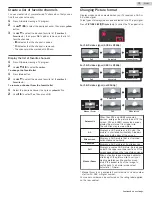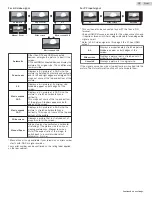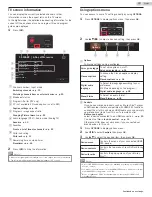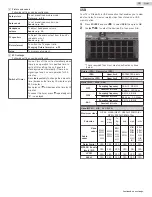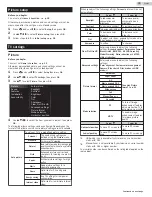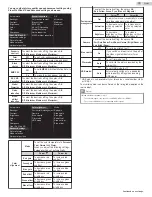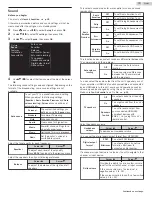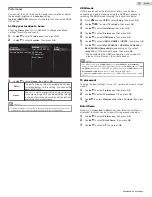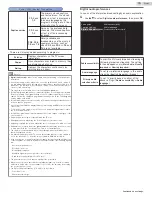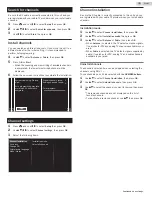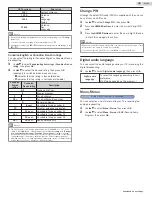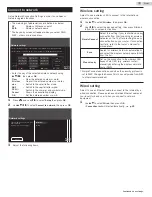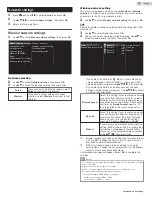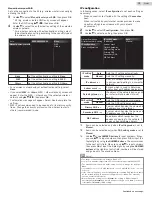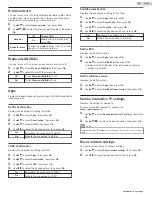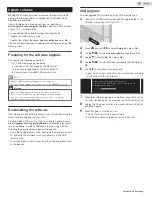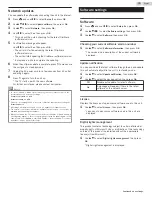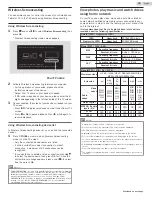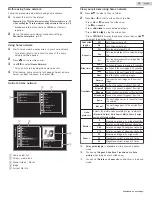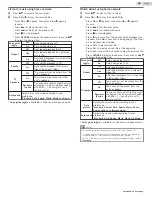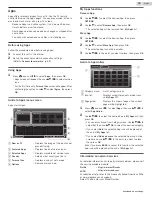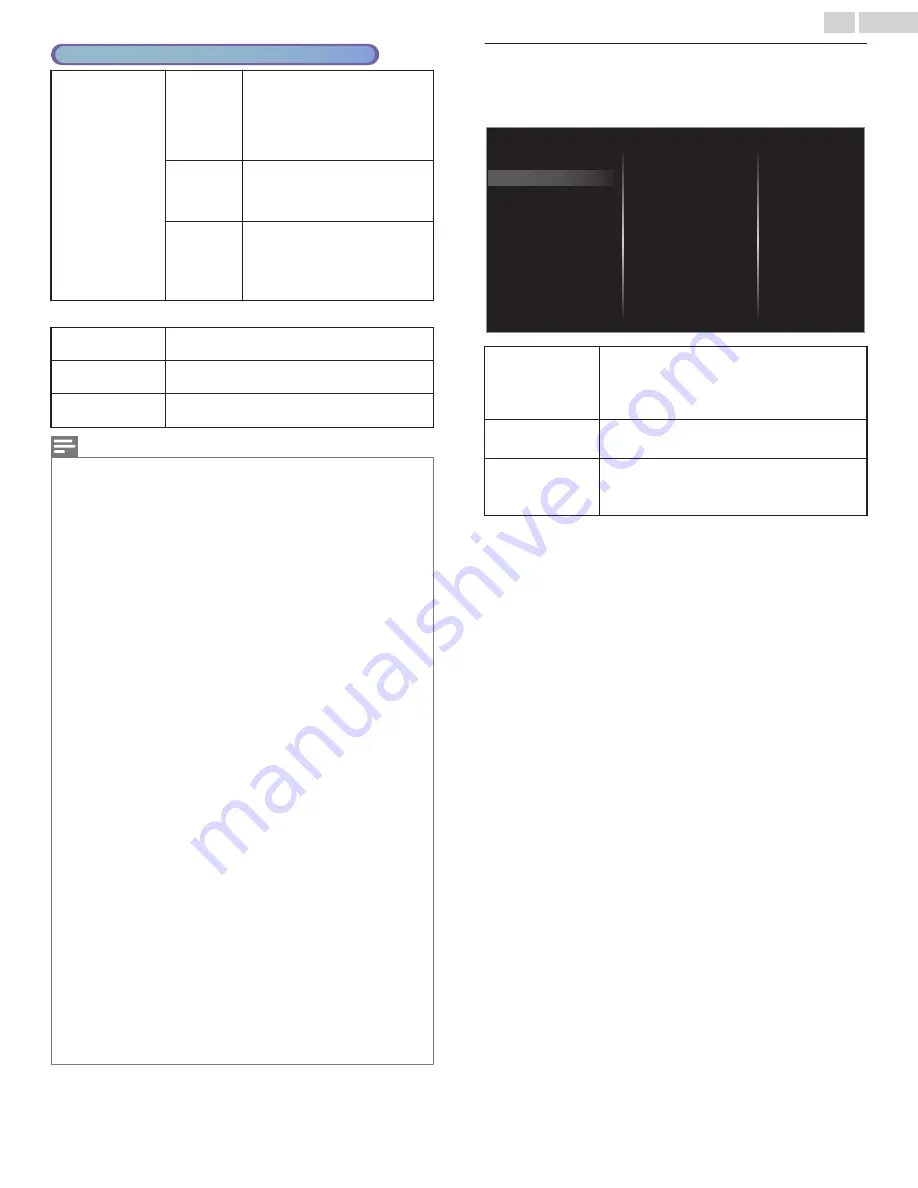
Cable / NTSC (Analog) TV operation
Caption service
CC-1
and
T-1
The primary closed captions
and text services. The closed
captions or text is displayed in
the same language as the
program’s dialog (up to 4 lines
of script on the TV screen).
CC-3
and
T-3
Serve as the preferred data
channels. The closed captions
or text is often a secondary
language.
CC-2
,
CC-4
,
T-2
and
T-4
Rarely available and
broadcasters use them only in
special conditions, such as
when
CC-1
and
CC-3
or
T-1
and
T-3
are not available.
●
There are 3 display modes according to programs:
Paint-on
Displays characters on the TV screen
immediately.
Pop-on
Once characters are stored in memory, they
are displayed all at once.
Roll-up
Displays the characters continuously by
scrolling (max. 4 lines).
Note(s)
●
Digital caption service
that you can switch differs depending on the broadcast
description.
●
Closed captioning service may not be controlled by this unit’s menu options if
you are watching television through an external cable or satellite set-top box. In
which case you will need to use the menu options on the external set-top box to
control closed captioning.
●
The captions do not always use correct spelling and grammar.
●
Not all TV programs and product commercials include closed caption information.
Refer to your area TV program listings for the TV channels and times of closed
caption shows. The captioned programs are usually noted in the TV listings with
service marks such as
CC
.
●
Not all captioning services are used by a TV channel during the transmission of
a closed caption program.
●
Closed caption will NOT be displayed when you are using an HDMI or a component
connection.
●
To show the closed caption on your TV screen, broadcast signal must contain
the closed caption data.
●
Not all TV programs and commercials have the closed caption or all types of the
closed caption.
●
Caption's and text may not exactly match the TV voice.
●
Changing channels may delay the closed caption for a few seconds.
●
Adjusting or muting the volume may delay the closed caption for a few seconds.
●
Abbreviations, symbols and other grammatical shortcuts may be used in order
to keep pace with the on-screen action. This is not a malfunction.
●
The caption or text characters will not be displayed while the Main menu or
functions display is shown.
●
If a black box appears on the TV screen, this means that the closed caption is
set to the text mode. To clear the box, select
CC-1
,
CC-2
,
CC-3
or
CC-4
.
●
If the unit receives poor quality television signals, the captions may contain errors
or there might be no captions at all. Some possible causes of poor quality signals
are:
–
Automobile ignition noise
–
Electric motor noise
–
Weak signal reception
–
Multiplex signal reception (ghosts or screen flutter)
–
Data dropout and pixelation (for DTV only)
●
The unit retains the closed caption setting if the power fails.
●
When the unit receives special effects playback signal (e.g. search, slow and
still) from a VCR’s video output channel (ch3 or ch4), the unit may not display
the correct caption or text.
●
The EUT setting that satisfies § 79.102 (e) is as follows:
–
Font: Mono-font
–
Character size: Large
Digital audio preferences
You can set the interpretive broadcasting by an audio explanation.
1
Use
H
I
to select
Digital audio preferences
, then press
OK
.
Primary audio selection criteria
Audio language
Audio accessibility
Digital audio preferences
Caption settings
Voice guide
Audio accessibility
To prioritize VI-Visually Impaired streaming or
HI-Hearing Impaired streaming: The setting
for handicapped users (
Main audio
,
Visually
Impaired
or
Hearing Impaired
).
Audio language
To set your preferred language in the audio
streaming (
English
,
Spanish
or
French
).
Primary audio
selection criteria
To set TV priority based on either of the
above settings: (
Audio accessibility
or
Audio
language
).
35
.
English
Continued on next page.

